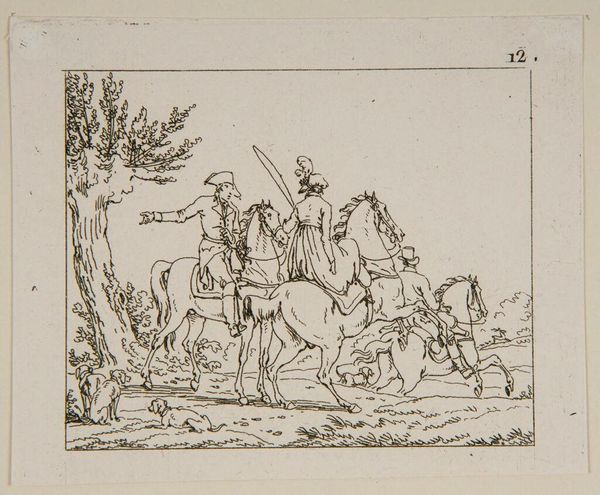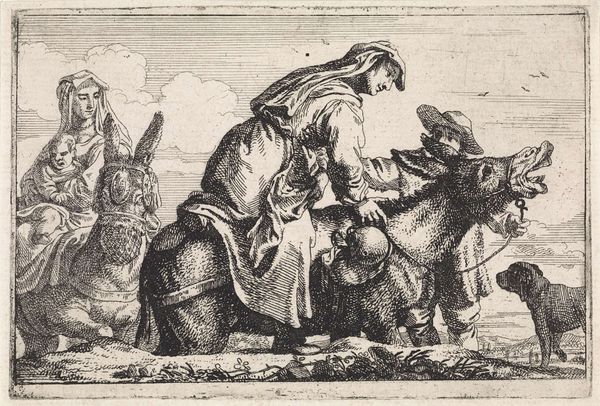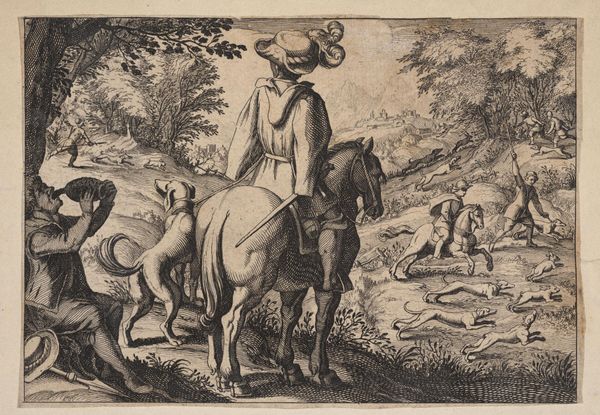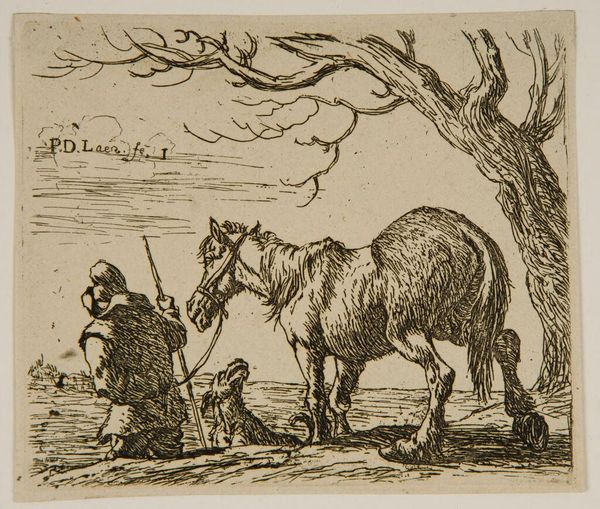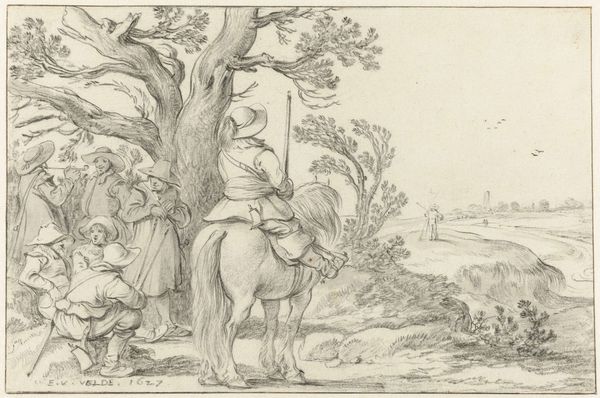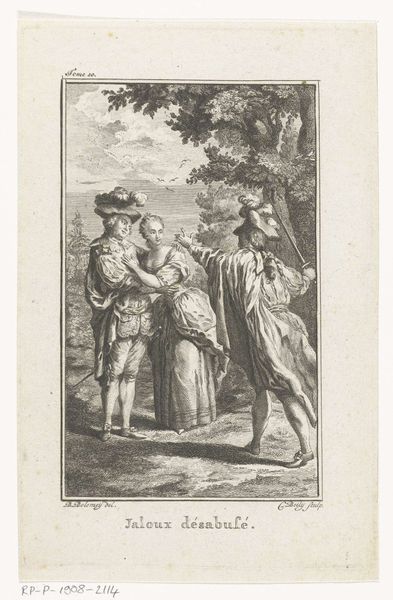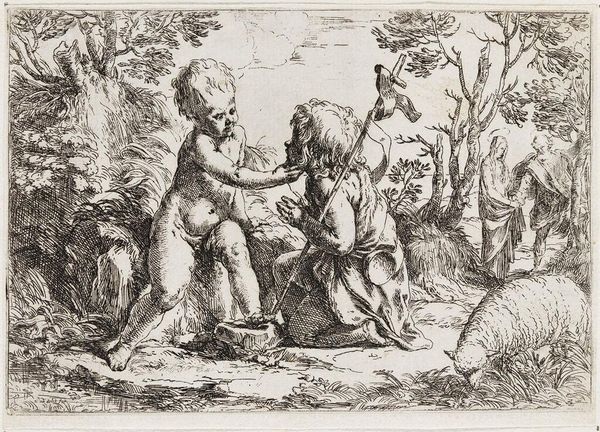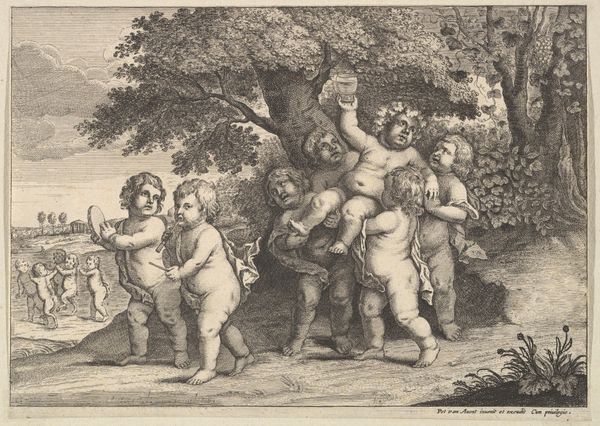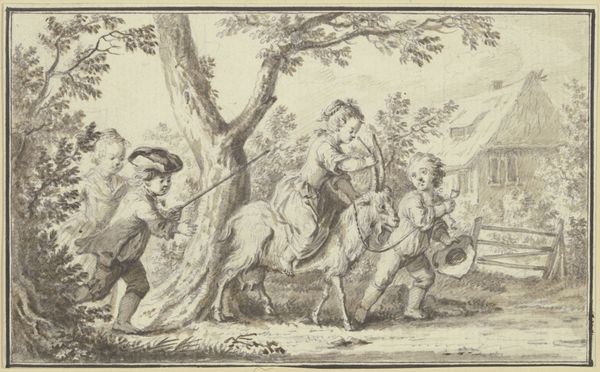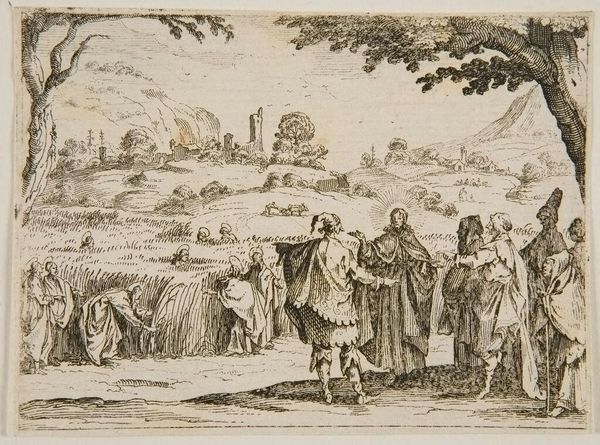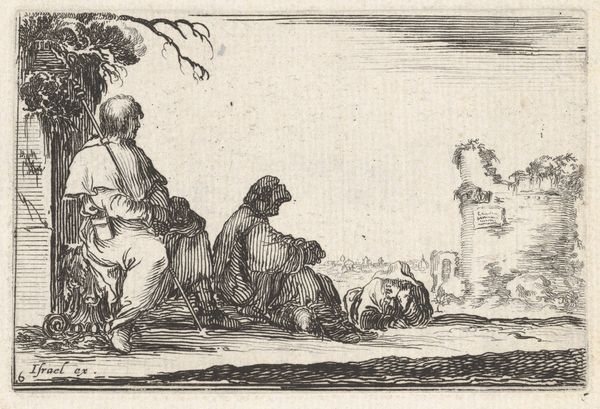
Copyright: CC0 1.0
Curator: Immediately, I'm struck by the starkness of this etching, a sense of both curiosity and unease emanating from the figures. Editor: Indeed. This is Bartolomeo Pinelli's "Gypsy Fortune-teller." Pinelli, born in 1781, was known for depicting Roman life and customs, often engaging with stereotypes circulating at the time. Curator: Stereotypes that carry a heavy weight, influencing how we understand marginalized communities, even today. The fortune-teller here, is she a knowing participant or a victim of circumstance? Her crossed arms suggest a guarded stance. Editor: These images played a role in constructing perceptions of "otherness." We must consider how Pinelli’s work contributed to the social and political climate toward groups such as the Romani in 19th-century Italy. Curator: Absolutely. And the two men with their horse: are they genuinely seeking guidance, or is there an imbalance of power at play, exploiting her position? Editor: Context is key. Pinelli's etchings were often commissioned for the tourist trade, catering to romanticized views of rural Italy. The image reinforces common tropes regarding itinerants. Curator: It’s vital to unpack these historical biases, viewing the artwork not as a neutral depiction, but as a reflection of prevailing societal prejudices. Editor: Yes, by analyzing Pinelli’s "Gypsy Fortune-teller" through a lens of social and institutional history, we can better understand the complex relationship between art, power, and representation. Curator: Thank you, considering it this way makes me look at the piece differently. Editor: Likewise.
Comments
No comments
Be the first to comment and join the conversation on the ultimate creative platform.
